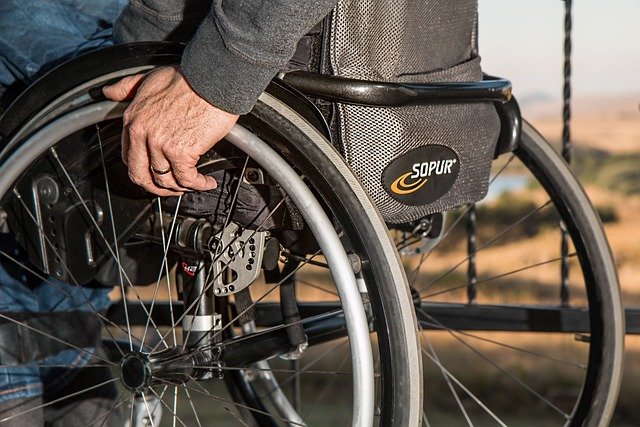Walk-In Tubs: Safety, Benefits, and Installation Guide
Walk-in tubs provide a safer bathing solution for individuals with mobility challenges, offering therapeutic benefits and independence. These specially designed bathtubs feature low-threshold entry doors, built-in seating, and various safety features that make bathing more accessible for seniors and people with disabilities.

Walk-in tubs have become increasingly popular as a bathroom modification that combines safety, comfort, and therapeutic benefits. These specialized bathing units are designed to address the challenges faced by individuals who have difficulty stepping over traditional bathtub walls or maintaining balance while bathing.
Walk-in Tub Benefits for Daily Living
Walk-in tubs offer numerous advantages that extend beyond basic safety considerations. The low-threshold entry door, typically ranging from 3 to 7 inches high, eliminates the need to step over a standard 14-16 inch tub wall. Built-in seating provides stability and comfort during bathing, while textured floors reduce slip risks. Many models include therapeutic features such as hydrotherapy jets, chromotherapy lighting, and heated surfaces that can help alleviate arthritis pain, improve circulation, and promote relaxation. The door seals create a watertight barrier, allowing users to enjoy a full bathing experience while seated securely.
Are Walk-in Tubs Safe for Seniors
Safety is the primary concern when evaluating walk-in tubs for senior use. These units incorporate multiple safety features including grab bars, non-slip surfaces, comfortable seating, and easy-to-reach controls. The low step-in height significantly reduces fall risks compared to traditional bathtubs. However, users must remain in the tub while it fills and drains, which can take 5-15 minutes depending on the model and water pressure. Some seniors may find the wait time uncomfortable, especially in cooler bathrooms. Quick-drain systems and heated surfaces help address these concerns. Professional installation ensures proper door sealing and drainage to prevent leaks or water damage.
Alternatives to Walk-in Tubs
Several alternatives exist for those seeking safer bathing solutions. Walk-in showers with grab bars, built-in seating, and low or zero thresholds provide easier access without the wait time associated with tub filling. Shower chairs and transfer benches can make existing bathtubs more accessible. Tub cut-outs involve removing a section of the existing tub wall to create a lower entry point, though this solution may compromise the tub’s structural integrity. Bath lifts mechanically lower and raise users into standard bathtubs, while bathtub rails and steps provide additional support. Each alternative offers different benefits and limitations depending on individual mobility needs and bathroom layouts.
Walk-in Tub Installation Process
The installation process typically requires professional expertise and takes one to three days to complete. Initial assessment involves measuring the bathroom space, evaluating plumbing and electrical requirements, and determining structural modifications needed. Removal of the existing bathtub may require cutting through walls or floors to access plumbing connections. New plumbing and electrical work accommodate the walk-in tub’s specific requirements, including GFCI outlets for powered features. The new unit is carefully positioned and connected to water supply lines, drainage systems, and electrical components. Final steps include sealing, testing all functions, and completing any necessary wall or floor repairs. Some installations may require permits depending on local building codes.
| Brand | Model Type | Key Features | Cost Estimation |
|---|---|---|---|
| Kohler | Soaking Tub | Low threshold, heated surfaces, quick drain | $3,000-$5,000 |
| American Standard | Therapeutic Tub | Hydrotherapy jets, chromotherapy, built-in seating | $4,000-$7,000 |
| Safe Step | Premium Model | Air jets, heated backrest, aromatherapy | $5,000-$10,000 |
| Jacuzzi | Finestra Series | Combination air/water jets, LED lighting | $6,000-$12,000 |
Prices, rates, or cost estimates mentioned in this article are based on the latest available information but may change over time. Independent research is advised before making financial decisions.
Leading Walk-in Tub Manufacturers
Several established manufacturers produce quality walk-in tubs with varying features and price points. Kohler offers models ranging from basic soaking tubs to therapeutic units with multiple jet systems. American Standard focuses on safety features and accessibility compliance. Safe Step specializes exclusively in walk-in tubs and provides comprehensive installation services. Jacuzzi leverages its whirlpool expertise to create luxury models with advanced hydrotherapy systems. Independent Living specializes in mobility-focused designs. When selecting a manufacturer, consider warranty coverage, local dealer support, installation services, and long-term maintenance requirements.
Walk-in tubs represent a significant investment in bathroom safety and accessibility. While they offer substantial benefits for individuals with mobility challenges, careful consideration of alternatives, proper professional installation, and realistic expectations about daily use ensure the best outcomes. The therapeutic and safety advantages can greatly improve quality of life for those who choose this bathing solution.




